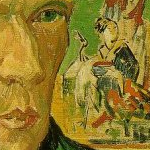While composing my previous post, a few other thoughts about novelist
Peter Carey and his visit to
UCA came to mind. I need to return to him one more time. Here's why: I'm always telling my students that being a writer is as much about having a thick skin as it is about having genius. There is a lot of talent in the gene pool, but also a lot of obstacles and too many distractions just begging to become excuses. The world gives us so many reasons not to write, not the least of which are the inevitable rejections along the way. Enduring those--and keeping on--is a real and absolutely vital talent. That talent has a lot more to do with how far you go than whether you can or did dazzle your Intro. to Creative Writing classmates. The ones who finally "make it," as an old teacher of mine was fond of saying, are the ones who keep getting the work done. Finally, it's all about perseverance.
The truth of this adage came home to me during Carey's visit. He told a few whopper anecdotes about getting slammed and having to pick himself up again. The first story came from his early years, when he was a young, college-aged guy working at an advertising agency and, on his own time, writing fiction. His first novel--the very first book he'd ever written--was quickly accepted for publication by a house in Australia. He received this news in a glowing letter from the publisher: a heck of a thrill for a young man! But during a later meeting with editors from this house it gradually became clear to him that they weren't nearly as excited about the book as their letter had indicated. In fact, they weren't going to publish it at all. Talk about a change of heart! But they weren't exactly straight with Carey, even then. They gave him the runaround, made proscrastinating excuses, and finally "kicked the book upstairs" by sending it the to an editor in London. Carey waited a while and then took off on his own personal, self-financed tour of Europe, ending up, of course, at the office of this London editor. He introduced himself to the man's secretary and explained that he'd like to meet the editor because the man might be publishing his novel. The secretary went in to check with her boss. When she came out moments later she was carrying his manuscript. No need to see him, the secretary explained. He won't be publishing you. That experience rocked Carey, and certainly made him question himself, but the end result was that he redoubled his writing efforts.
Some years later, when his novel
Oscar and Lucinda came out, Carey was slammed again. First, his publisher refused to pay for a book tour. So on his own initiative, with logistical difficulty--he was still working in the ad business then--and at his own expense, Carey traveled to California to attend the important
American Booksellers Association convention. The good news was that his novel had just received a glowing, front page review in the
New York Times Book Review. The bad news was that the just released first edition was so rife with errors that it had to be pulled immediately. All copies were ordered to be destroyed. So he traveled to America to promote his big breakout book only to see it become completely unavailable! He returned home understandably embittered. (To make it worse, despite the great review in the
New York Times he felt like just a number in the madhouse of the ABA convention.) "That's the kind of thing that might make somebody give up," I said to him. He looked at me quizzically and then replied that the thought of giving up never went through his head. There was nothing else to do, he said, except to get back to writing. Indeed. (Btw, after this initial bump in the road it all came out good for
Oscar and Lucinda, which won the
Booker prize in 1988.)
I was only half-serious with my "giving up" remark. But it's true: Some people faced with those turn of events
would have given up. But writers--real writers? Never. Real writers remain committed to the art form, and that commitment demands action. Commitment demands patience. Most of all, commitment demands that you work. Real writers don't worry about which cafes they should hang out at or which movies they're supposed to see or which political party they belong to or whether they need to update their Facebook status. Real writers don't let rejections and setbacks stand for anything more than the low level hurdles they are. Real writers work. No matter what. That's the definition of "making it."











 0
0















